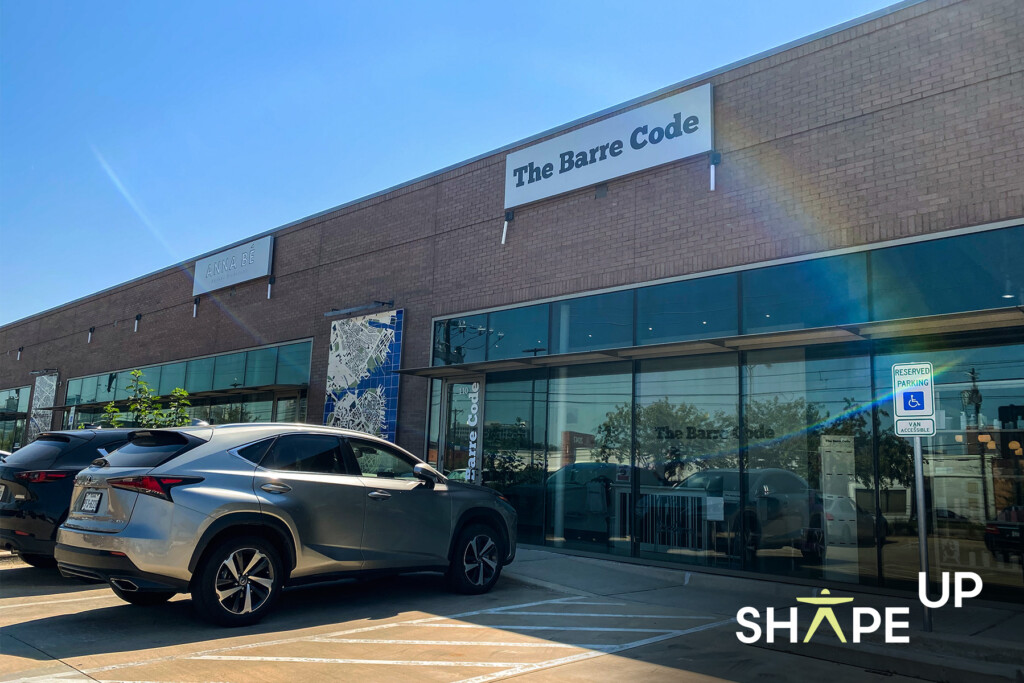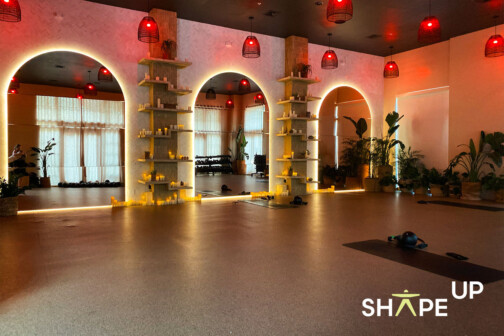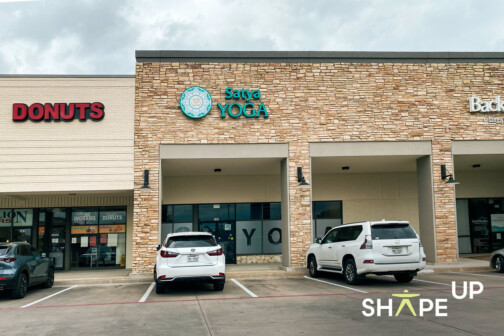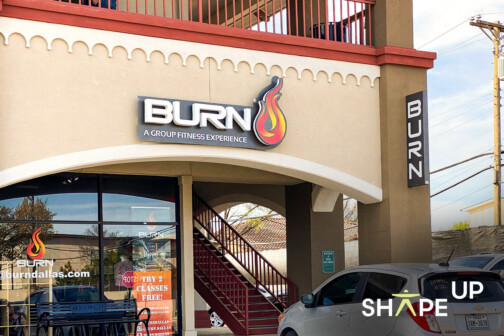Sometimes, when I’m cooking in my kitchen, I’ll absentmindedly start practicing my old ballet moves: tendus, pliés, and battements. Or, when I’m walking down the hall after hours at work, I’ll mark a jete (leap). Generally, when I start to do this, it’s time for a barre class.
I signed up for a lunchtime session at The Barre Code in the Design District. I got to class 15 minutes early and filled out a new-member form. There was a question about injuries, and I mentioned my disability to the instructor. She asked a couple of questions but didn’t make a huge thing of it.
I picked up a set of weights—the lightest they offer is two pounds—and a cloth exercise band and walked into the studio. It had a cushioned floor and stations labeled on the walls behind the bar. I was nervous that the spots were too close together, but we did a lot of floorwork in the middle of the room that allowed us to spread out. We started with lunges and knee lifts to warm up as students filed in.
The actual class was divided into the parts of the body we’d work on: arms, legs, core, and glutes. The arms were exactly what you’d expect: lots of curls, lifts, and shoulder rotations holding the weights and the characteristic little pulses of barre. For all the arm movements, our instructor gave us the option to do them without weights. We also did planks and pushups. These were killer because they were super slow; down for four, hold for four, up for four. But we could do wall pushups, if needed.
We went to the bar for our leg exercises. The instructor had us wrap the exercise band around the bar then pull back until it was taut. The whole point of it was to give us less support than if we held onto the bar, but I actually loved using that torque (yay physics!) to help me. We went up on our toes (relevé) for this entire section, bending our legs and pulsing them out in small movements. While this certainly wasn’t easy, I didn’t have to modify.
After legs, we sat on the ground and leaned back while holding onto the band until we were in a crunch position. We pulsed up and down slightly. Being able to hold onto the band helped me do these crunches, because I could use my arms to supplement my weak core strength. These were still difficult, especially when we started variations. We also did leg lifts, side planks, and bicycle kicks, which I had to modify.
I felt most comfortable when we got to the glute exercises. They were the most like a standard ballet class, which I took for nine years. We stood facing the bar, resting our hands gently. Then we’d circle our legs behind us (rond de jambe) into petite battements behind us—slowly lifting our leg back behind us and down, then adding in pulses. Considering I mindlessly do these in my kitchen, these were easy. Then we did coupés, which are similar, except your leg is curved behind you. This got a little harder, and I felt my body starting to cramp and protest, but I still enjoyed it.
Class ended with something called the “burnout”—basically a long wall sit—and stretching. I was sore and shaky afterwards, but content.
Final Thoughts
Aesthetics
The Barre Code’s space is set up like a typical dance studio, but with a cushioned floor and a single bar on the walls. There was a long ribbon of blue lights along the top of the mirror, which was fun. As we transitioned to various sections, the fluorescent lights would dim, and the white on my socks started to glow. It’s a fun experience: the music’s catchy, and the studio hosts themed sessions, like “Back to the 90s Barre.”
Difficulty
While I wouldn’t call any barre class easy—those small movements burn—I didn’t think this class was too difficult, either. The instructor gave us variations to different exercises so we could work at our own levels of ability. And although it’s not offered every class, I liked adding the exercise band into the mix. It was a fun challenge to balancing, but it certainly helped me when it came to crunching, which I always struggle with.
Accessibility
The studio doesn’t make a huge fuss asking about injuries. If you’re injured, or disabled like me, it’s really on you to ensure your instructor knows. However, they offer virtual sessions, and the barre class is easily adaptable—do what you can, and no one really pays you any attention. In this class, though, I didn’t have to make many modifications, which was surprising and exciting to me.
The Cost of It All
I loved The Barre Code’s introductory offer: three free classes. The only kicker is you must take them all in a two-week period. Once you get through your free classes, the studio offers barre, brawl (kickboxing), bootcamp, and more classes. A single class is $25. Class packs begin at $110 for five sessions and monthly memberships begin at $69 (four classes per month). If you’re not ready to hand over your credit card, the studio also offers free community classes on the weekends.
Would I Go Back?
I already have. After all, I did get three free classes.
Get the AtHome Newsletter
Author






